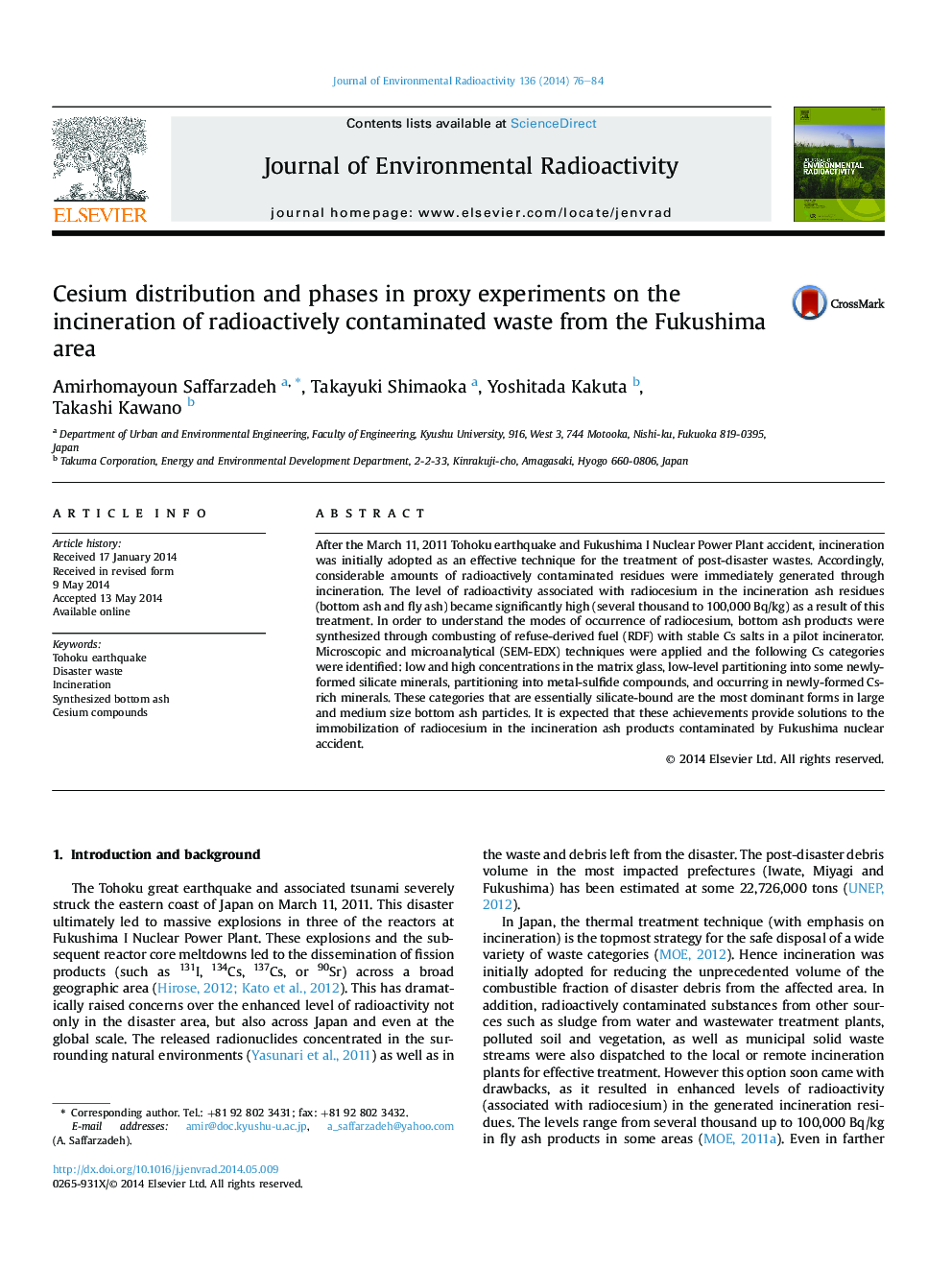| Article ID | Journal | Published Year | Pages | File Type |
|---|---|---|---|---|
| 8083026 | Journal of Environmental Radioactivity | 2014 | 9 Pages |
Abstract
After the March 11, 2011 Tohoku earthquake and Fukushima I Nuclear Power Plant accident, incineration was initially adopted as an effective technique for the treatment of post-disaster wastes. Accordingly, considerable amounts of radioactively contaminated residues were immediately generated through incineration. The level of radioactivity associated with radiocesium in the incineration ash residues (bottom ash and fly ash) became significantly high (several thousand to 100,000Â Bq/kg) as a result of this treatment. In order to understand the modes of occurrence of radiocesium, bottom ash products were synthesized through combusting of refuse-derived fuel (RDF) with stable Cs salts in a pilot incinerator. Microscopic and microanalytical (SEM-EDX) techniques were applied and the following Cs categories were identified: low and high concentrations in the matrix glass, low-level partitioning into some newly-formed silicate minerals, partitioning into metal-sulfide compounds, and occurring in newly-formed Cs-rich minerals. These categories that are essentially silicate-bound are the most dominant forms in large and medium size bottom ash particles. It is expected that these achievements provide solutions to the immobilization of radiocesium in the incineration ash products contaminated by Fukushima nuclear accident.
Related Topics
Physical Sciences and Engineering
Energy
Nuclear Energy and Engineering
Authors
Amirhomayoun Saffarzadeh, Takayuki Shimaoka, Yoshitada Kakuta, Takashi Kawano,
